東北アジアの社会と環境
全7冊からなる本シリーズは、2015年12月に当センター設立20周年を記念して開催された国際シンポジウムをもとに企画された。2018年から2019年にかけて逐次刊行。
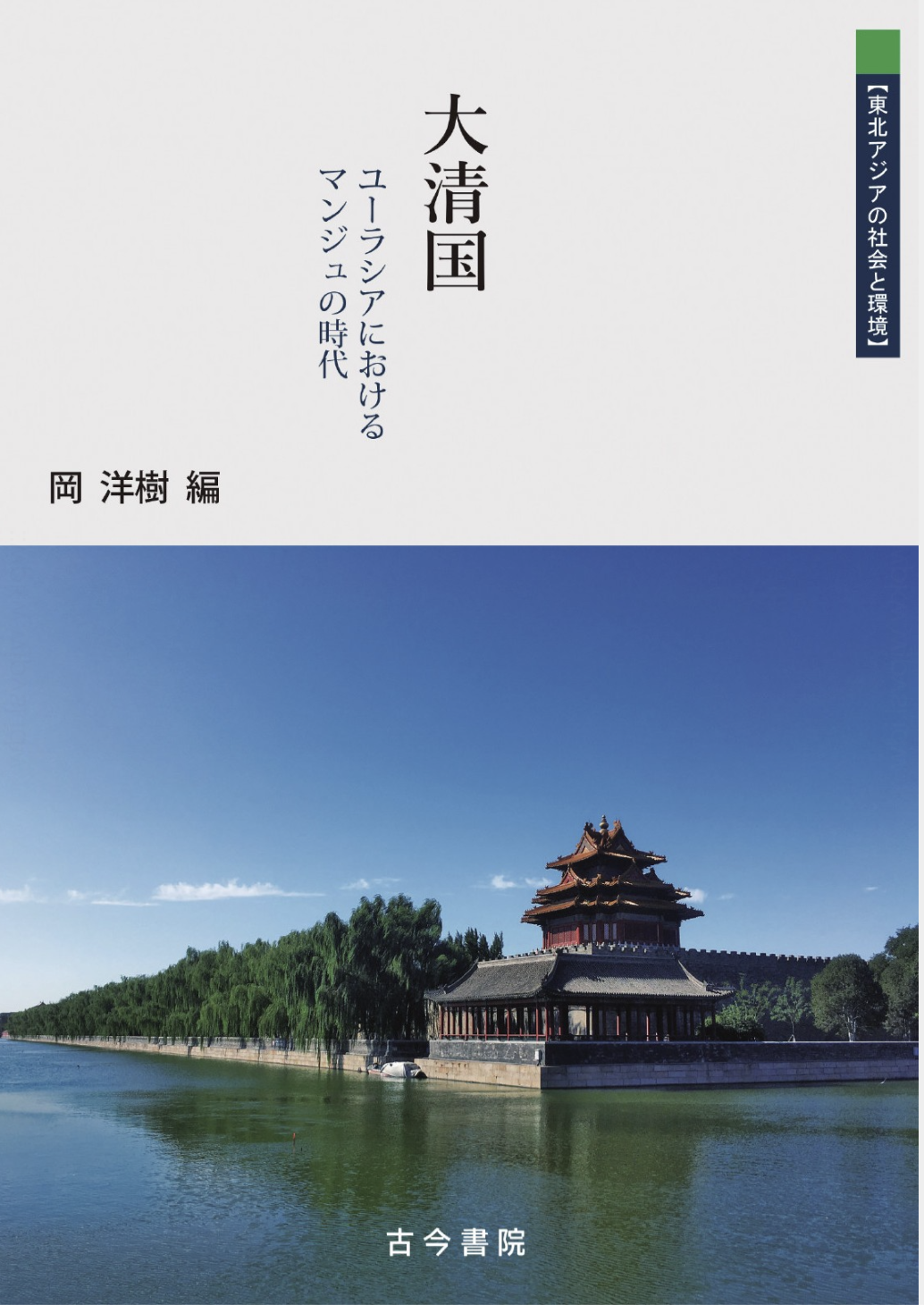
| シリーズ | 【東北アジアの社会と環境】 |
| タイトル | 大清国 ユーラシアにおけるマンジュの時代 |
| 編者 | 岡 洋樹 |
| Daicing gurun: The Manchu’s era in the Eurasian history. | |
| A4版 | |
| 2025年7月30日 | |
| 古今書院 | |
| Vii+93頁 |
マンジュによって建国され、17世紀から20世紀初頭まで東北アジアの大陸部を支配した大清国は、言語・生業・宗教ばかりでなく、統治理念・世界観さえも異にする多様な地域世界を200年以上にわたり統合し、続く20世紀における東北アジア史の歴史的展開の基盤となった。それは文化的均質さを前提とする近代の国家とは異なり、文化的差異に立脚した統治であった。本書は、東北アジアにおける大清国時代の歴史的意義を、漢・チベット・モンゴル・ムスリム・マンジュの五つの側面から考察する。
古今書院HP
Founded by the Manchu, the Qing Dynasty ruled the continental region of Northeast Asia from the 17th century to the early 20th century, integrating diverse regional worlds each of which was characterized not only by language, livelihoods, and religion, but also by differing governance philosophies and worldviews for over 200 years. Unlike modern nation-states that presuppose cultural homogeneity, it was a governance based on cultural differences. This book examines the historical significance of the Qing Dynasty era in Northeast Asia from five aspects including Han, Tibetan, Mongolian, Muslim, and Manchu.
古今書院HP
Founded by the Manchu, the Qing Dynasty ruled the continental region of Northeast Asia from the 17th century to the early 20th century, integrating diverse regional worlds each of which was characterized not only by language, livelihoods, and religion, but also by differing governance philosophies and worldviews for over 200 years. Unlike modern nation-states that presuppose cultural homogeneity, it was a governance based on cultural differences. This book examines the historical significance of the Qing Dynasty era in Northeast Asia from five aspects including Han, Tibetan, Mongolian, Muslim, and Manchu.
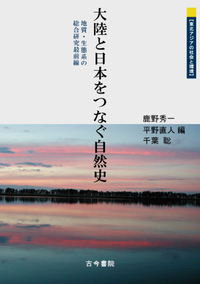
| シリーズ | 【東北アジアの社会と環境】 |
| タイトル | 大陸と日本をつなぐ自然史: 地質・生態系の総合研究最前線 |
| 編者 | 鹿野秀一、平野直人、千葉聡 |
| Natural history connecting Japan and the adjacent continent : the forefront of integrated researches in geology and ecosystems | |
| B5版 | |
| 2021年1月8日 | |
| 古今書院 | |
| 81頁 |
東北アジアの大陸地域と日本の地質・生態系をテーマに、異なる分野を結びつけ、新たな理解を目指す。地球科学と生態学を中心に、自然史にかかわる問題を取り上げ、それをどう理解し、研究していけばよいのかを解説する。特に地球のダイナミクスと生物多様性、地球史と生物進化、大陸と日本列島などを題材とした研究事例を紹介する。またこれらを通して、今後の東北アジア地域の自然研究に、どのような新たな視点が与えられるのかを紹介する。
古今書院HP
古今書院HP
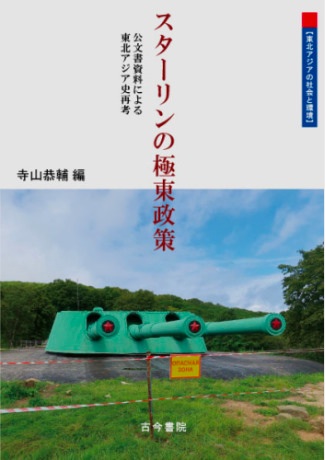
| シリーズ | 【東北アジアの社会と環境】 |
| タイトル | スターリンの極東政策:公文書資料による東北アジア史再考 |
| 編者 | 寺山恭輔 |
| Soviet Far Eastern Policies of Stalin: Reconsidering Northeast Asian History with archive materials | |
| B5版 | |
| 2020年3月4日 | |
| 古今書院 | |
| 138頁 |
第二次大戦後の東北アジアでは、日本が満洲、台湾、朝鮮を喪失後、ソ連の庇護を受けたモンゴルが独立し、国共内戦を経て中華人民共和国が成立し、朝鮮戦争を経て朝鮮半島の南北分断が固定化するという経緯をたどって、現在に至る戦後秩序が形成された。そのいずれの事象においてもソ連就中スターリンの果たした影響は大きかった。この東北アジア地域形成に至るまでの過程を深く理解するため、本書は1920年代から1945年に至るまでのスターリンの極東政策に焦点をあてた論文4本と戦後の中ソ関係を扱った論考1本を収録している。
古今書院HP
Soviet dictator I.V. Stalin played a crucial role in the formation of Northeast Asian geopolitical regime after the Second World War. In order to understand the process of this historical change in this period this book of collected articles, especially, focused on the pre-war Soviet policies in the Northeast Asian regions under the leadership of Stalin. An article about the Russo-Chinese relationship after the World War Ⅱ is also included.
古今書院HP
Soviet dictator I.V. Stalin played a crucial role in the formation of Northeast Asian geopolitical regime after the Second World War. In order to understand the process of this historical change in this period this book of collected articles, especially, focused on the pre-war Soviet policies in the Northeast Asian regions under the leadership of Stalin. An article about the Russo-Chinese relationship after the World War Ⅱ is also included.
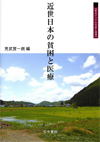
| シリーズ | 【東北アジアの社会と環境】 |
| タイトル | 近世日本の貧困と医療 |
| 編者 | 荒武 賢一朗 |
| Poverty and Medicine in Early Modern Japan | |
| A5版 | |
| 2019年2月9日 | |
| 古今書院 | |
| 112頁 |
近年の学術的動向として、「生存」や「医療」・「福祉」は大きな注目を集めるテーマである。本書はその動きに対して、歴史学研究の持つ手法を駆使し、江戸時代から明治時代における貧困と医療を考察した。日本の村落史研究は当然ながら、女性史や医学史、経済史などの領域にも接点を有し、人々が生きた実態を多
様な歴史資料から明らかにしている。とくに、村落・百姓の具体的活動が本書の魅力であるが、各章で詳しい説明があるように領主・政府の政策とは違った「自分たちで地域を守る」という共通意識は重要である。この民衆たちの主張は現代社会につながる課題として議論が深まることを希望する。
古今書院HP
Existence, medicine and welfare are themes which are gathering significant attention as academic trends in recent years. In response to these trends, this book utilized the methods of history research to examine poverty and medicine between the Edo to Meiji eras. Japanese studies on village history are naturally connected to the fields of women’s history, history of medicine, and economic history, and these studies reveal the reality of people’s lives through various historical records. While the specific activities of village communities and farmers in particular are what make this book so appealing, it is important to have a common awareness of “protecting the region ourselves,” which differs from the policies of feudal lords and the government as explained in detail in each chapter. It is hoped that there will be deeper discussion about this assertion from the common people as a topic relevant to modern society.
様な歴史資料から明らかにしている。とくに、村落・百姓の具体的活動が本書の魅力であるが、各章で詳しい説明があるように領主・政府の政策とは違った「自分たちで地域を守る」という共通意識は重要である。この民衆たちの主張は現代社会につながる課題として議論が深まることを希望する。
古今書院HP
Existence, medicine and welfare are themes which are gathering significant attention as academic trends in recent years. In response to these trends, this book utilized the methods of history research to examine poverty and medicine between the Edo to Meiji eras. Japanese studies on village history are naturally connected to the fields of women’s history, history of medicine, and economic history, and these studies reveal the reality of people’s lives through various historical records. While the specific activities of village communities and farmers in particular are what make this book so appealing, it is important to have a common awareness of “protecting the region ourselves,” which differs from the policies of feudal lords and the government as explained in detail in each chapter. It is hoped that there will be deeper discussion about this assertion from the common people as a topic relevant to modern society.
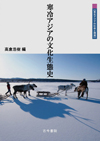
| シリーズ | 【東北アジアの社会と環境】 |
| タイトル | 寒冷アジアの文化生態史 |
| 編者 | 高倉浩樹 |
| History and Cultural Ecology of Boreal Asia | |
| A5版 | |
| 2018年3月10日 | |
| 古今書院 | |
| 120頁 |
人類文化史の観点からみれば、シベリア・モンゴル・中国東北部を中心とする東北アジアは、ステップの牧畜とタイガ・ツンドラ・海岸部の狩猟採集という環境適応が形成された地域である。しかし、よりミクロな観点からは、狩猟・漁労・牧畜・農耕が様々な形で複合して生業と社会組織を形作ってきた。これをつぶさに見ると、従来の生業と社会の常識をくつがえす事例が多数ある。例えば北太平洋沿岸部の先住民民族誌にみられるように、狩猟採集生業でありながら定住化し階層化された社会を形成した。また東シベリアではステップ型の五つの家畜を飼育する遊牧が、北上することで牛馬牧畜と狩猟複合が形成されるという具合である。つまり利用可能な資源とこれをはぐくむ自然環境さらに政治経済的な動態は、極めて可塑的な形で人類の環境適応を可能にしてきたのである。本巻では、考古学及び民族誌的に観察しうる局所的な自然環境のなかで展開した個別の生業複合に着目し、これを進化と適応という観点から分析することで、ミクロ環境のなかで人類集団が発揮しうる自然の利用・改変・保全の特質を明らかにする。とりわけ気候変動や災害といった自然環境の攪乱の局面や、歴史上みられる帝国的な国家との関係に着目することで、個々の社会組織にみられる環境適応の柔軟性と脆弱性を明らかにする。このことを通して、東北アジアにおける環境適応をモデル化し、人類史を理解するための手がかりを提示する。
This book is an archaeological and Anthropological approach to the cultural history of Northeast Asia. Five authors explore the adaptations of the archaeology in the last glacial maximun; Ainu sedenrary hunter and gatherers with social strasficaition, the permafrost and cultural interaction in eastern Siberia: the fishing-herding complex in western Siberia; ecological feature of Mongolian pastoralism.
This book is an archaeological and Anthropological approach to the cultural history of Northeast Asia. Five authors explore the adaptations of the archaeology in the last glacial maximun; Ainu sedenrary hunter and gatherers with social strasficaition, the permafrost and cultural interaction in eastern Siberia: the fishing-herding complex in western Siberia; ecological feature of Mongolian pastoralism.

| シリーズ | 【東北アジアの社会と環境】 |
| タイトル | 越境者の人類学 |
| 編者 | 瀬川昌久 |
| Anthropological Studies on Transnational Families and Individuals | |
| A5版 | |
| 2018年3月10日 | |
| 古今書院 | |
| 156頁 |
国境を越えた人の移動の研究には、国際的な政治秩序や経済構造などのマクロな要因から全体の趨勢を説明しようとする研究と、移動する個々人や家族の個別具体的な経験に注目するミクロな研究が存在するが、本書はこのうちの後者の視点に徹することを意図している。それは文化人類学の直接参与観察の手法に適合した研究視座であるとともに、国家やエスニシティーや地域コミュニティーといった従来的な集団枠組みを超え、個々人または個々の家族の個別経験を徹底して記述・分析してゆく個人誌・家族誌の方法論の確立を目指すものでもある。そのような視点から、本著は東北アジア諸地域を舞台とした越境移民たちの体験の次元に寄り添い、マクロな政治・経済要因には還元しきれない彼らの移動動機や葛藤・苦悩・未来に向けた意志などを、個別具体的に理解しようと努めている。
There are two opposite kinds of transnational migration studies, one is the macroscopic study of total trend of migration from the viewpoint of international balance of politico-economical factors, and another is the microscopic study of each families or individuals who were, willingly or unwillingly, involved into these movements in which researchers try to understand the human nature through their special or extreme experiences. This book focused on the later point of view, and tried to describe and analyze the detailed experience of transnational migrants which is unable to understand within the existing framework of social groups such as “nation”, “ethnicity”, or “local community”. In this sense, the book is a part of an ambition to establish a new methodological framework for anthropology based on family history and personal life story instead of that based on “ethnography”.
There are two opposite kinds of transnational migration studies, one is the macroscopic study of total trend of migration from the viewpoint of international balance of politico-economical factors, and another is the microscopic study of each families or individuals who were, willingly or unwillingly, involved into these movements in which researchers try to understand the human nature through their special or extreme experiences. This book focused on the later point of view, and tried to describe and analyze the detailed experience of transnational migrants which is unable to understand within the existing framework of social groups such as “nation”, “ethnicity”, or “local community”. In this sense, the book is a part of an ambition to establish a new methodological framework for anthropology based on family history and personal life story instead of that based on “ethnography”.